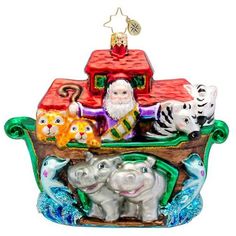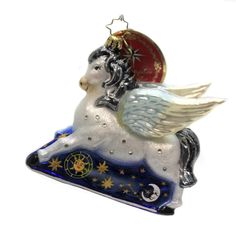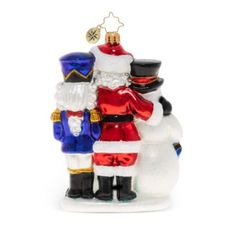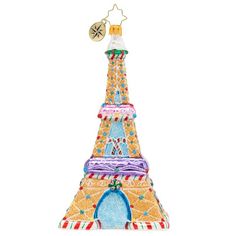Vintage Shiny Brite Christmas Tree Ornaments Undergo A Christopher Radko Design Interpretation
- Karen Adams

- Nov 8, 2020
- 4 min read
Updated: Dec 3, 2020
Christmas is a season that unites families,friends and strangers in a unique and magical way. It invites past memories to resurface and morph into a rekindled love. The Holiday Season includes those present or in spirit with who we share a timeless love.

Christmas Trees are a Holiday tradition that have the ability to hold countless memories while creating new ones. Ornaments play a significant role in harnessing both love and energy. Passed from generation to generation the love and stories instilled in each ornament enhances your tree's beauty and carries a legacy.
A German, Max Eckartdt, totally understood the magic of Christmas ornaments and dedicated his life to their creation. Prior to WWII almost all glass ornaments were imported from Germany. In 1926 Max and his brother Ersnt made the switch from selling toys to openining an ornament business in Oberlind, Germany. Later immigration to NYC lead Max to importing the ornaments from Germany to sell in the USA. Hitler's rise to power and British blockades stopped Max from importing ornaments to the United States in 1939. Max became convinced he could start producing his own line of beautiful glass ornaments in America. He was no longer able to hire craftmen to hand blow each ornament, so a new idea was born. During this period,Corning Glass Company was producing machine blown light bulbs. This sparked Max's extraordinary idea of converting the light bulb machines to glass ornament machines. Corning made the conversion and began producing clear glass ball ornaments. In December 1939, over 250,000 ornaments were created and sold to Woolworth stores across America,under the name Shiny Brite.
Max started a New Jersey ornament decorating company to embellish the Corning clear balls.
The clear balls interiors were sprayed with silvered nitrate and lacquered to give them a "Shiny Brite" appearance, a legend was born. In the 1940's other colors including red, green, gold, icy pink and blue appeared. Now the exterior of the balls were also being adorned with handpainted stripes or flowers. As the colors and designs evolved a variety of shapes emerged, including icicles, finials, bells, teardrops, japanese lanterns and even pinecones. Mica flakes were also used to create magical snow scenes on the ornament's exterior.
The bombing of Pearl Harbor lead to war with both Germany and Japan in 1941. With the onset of war many restrictions were set in place on the use of all metals. Max's silver nitrate lining was gone when the government declared it a "nonessential" use of metal. In another atttempt to offer a touch of bling, Shiny Brite began inserting small strands of tinsel into the clear balls.

The Government stopped that practice also noting the metal content of the tinsel. The metal caps used to hang the balls became prohibited. The metal caps were replaced with cardboard caps and a string of yarn to attach the ornament to the tree. Today collectors consider a transparent Shiny Brite ball ornament with a cardboard cap to be the "Holy Grail" of Christmas ornaments. In the 1940's the shiny brite box displayed an image of Santa shaking hands with Uncle Sam to emphasize the fact that the ornaments were American made.
In 1945 the war ended and metal restrictions were lifted. The shiny Brite company was sold to Thor, a Chicago based washing machine company. Thor produced 75% of all the ornaments sold worldwide.
Then the artificial Christmas tree arrived on the holiday scene in the 1960's and customers wanted cheap unbreakable plastic ornaments to hang upon it.
Sadly, Max died in the late 1960's and Shiny Brite began to fade. The latest trend arrived on the holiday scene, the aluminum artifical tree. This tree was being bathed in color from a spotlight rotating color wheel that sat at its base. As the wheel turned the tree changed colors. I remember being mesmerized by this bold unconventional Christmas display.

Traditional Christmas decor was in a state of change. The Shiny Brite Company closed its doors in 1962. In the 1970's an American company, Poloron bought the Shiny Brite name, Corning continued to make the blank balls for them well into the 1980's. This era became the low point for Shiny Brite's legacy. Poloron began shrink wrapping designs onto the balls. The company also began using neon glow in the dark glitter inside plastic ornaments. Poor Max, must have been turning over in his grave.
Finally, the original beauty of Shiny Brite returned in 1998 reflecting Max's original vision. Christopher Radko purchased the Shiny Brite name and began the journey of recreating the original quality and grandeur of the past ornaments. The timless beauty had returned to the brand. Christopher understood Max's vision and revived Max's Christmas spirit. Today,authenic Radko ornaments display a charm attached to the hanger with the trademark of a gold crown.
Time marches on and Radko sold the company that still bears his name and philosophy. The Shiny Brite brand has produced over 18 million ornaments. The journey has been ageless and continues to live on bringing new traditions and memories to countless families. I hope your Christmas tree is always filled with magic and memories. Merry Christmas Max!
Remember, now is the time for you to create new memories for you and your family.
At The Hundredth Monkey Boutique we offer everything you need to have that perfect Holiday magic fill your home. Our boutique offers vintage ornaments and one of a kind decor items.Check us out or contact us if you don't see what you are looking for, chances are it is in our warehouse and available to purchase.
Have a very very merry and blessed Christmas.




















Comments